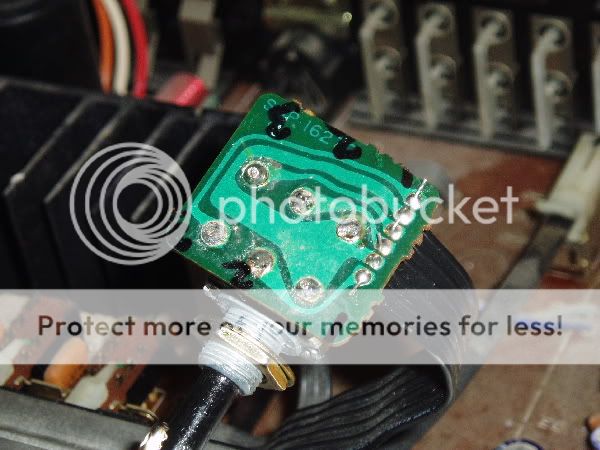Dicky-Art said:
OK....I've just done another test as you suggested. They are definately log pots.
1/4 turn 0.4V; 1/2 turn 1.1V; 3/4 turn 3.3V; 1full turn 9.17V.
I'll go along with that.
Dicky-Art said:
Can't be "modern outputs" being too high as Turntable through phono is the same!
That's a fair assumption too.
Dicky-Art said:
I've just tried something. Disconnecting one gang, so only one channel. ....pin 1 is common, pin 2 out, pin 3 in. ....reversed pin 2 and 3 and this makes one channel unable to turn down fully (not touching balance control), other channel off. Turning pot turns volume up on silent channel (quickly as before) but leaves unmuted channel still low. If you follow!
If pin 1 was ground should changing pin 2 and 3 round not make any difference as the resisance track the signal travels is the same, just other direction?? (please don't confuse me and mention diodes!)
The more I think about this the more it puzzles me:?
There are no diodes
🙂 and this gets more complicated to explain now.
If I understand you correctly... if you keep pin 1 (the ground/common pin of pot) connected and reverse pins 2 and 3 then you are now feeding the preamp output into the moving wiper contact. The power amp feed is now taken off the fixed "top" of the resistive track (pin 3).
So as you turn the pot the preamp output impedance now comes into play in that the pot is now "shorting" the preamp to ground as it is turned.
To recap and try and pull it all together...
(1) the voltage readings from the pot tested prove a log type.
(2) have you fitted a 220K or 250K pot that measures as per this voltage test. Also remember I looked at a similar circuit and found the balance control could interact with the volume. So we have to stick to 220/250K
If the problem is that there is poor control and the volume range all happens in the "first few degrees of rotation" then we have to move away from keep blaming the pot. If the pot is correct value and log type (and we have proved it for the one you tested) then we have to look elsewhere. Could it be normal for this amp ? Without actually hearing this it's hard to make a comparative judgement.
If the amp is original from new then it's hard to imagine anything causing this. If the levels were high from the preamp then it would give this effect and similarly if the gain of the power were higher. Those possibilities all require deliberate component changes to have taken place.
One thing you could try... if you added a resistor in series with the feed into pin 3 of the pot (the end opposite common ground) to guage the effect. We know the pot is 220K so try adding a 47K or 100K series resistor. If that works then we could perhaps add a more suitable divider.
🙂 been a year or so since replacing.
been a year or so since replacing.


